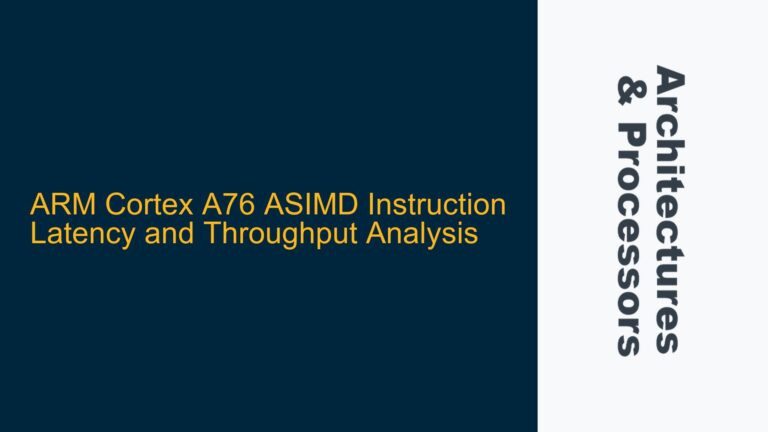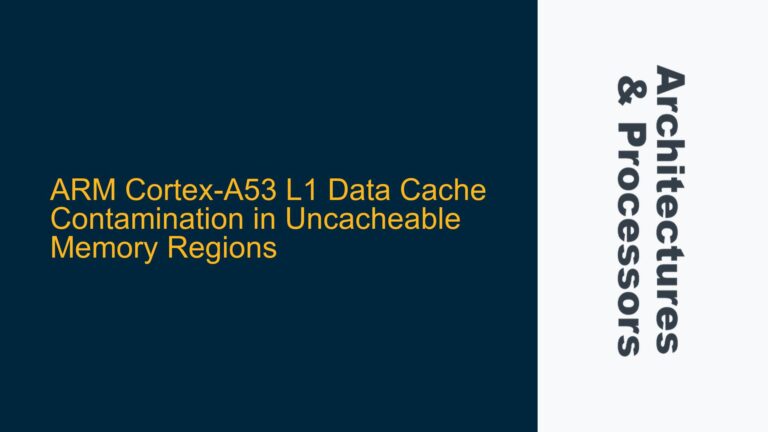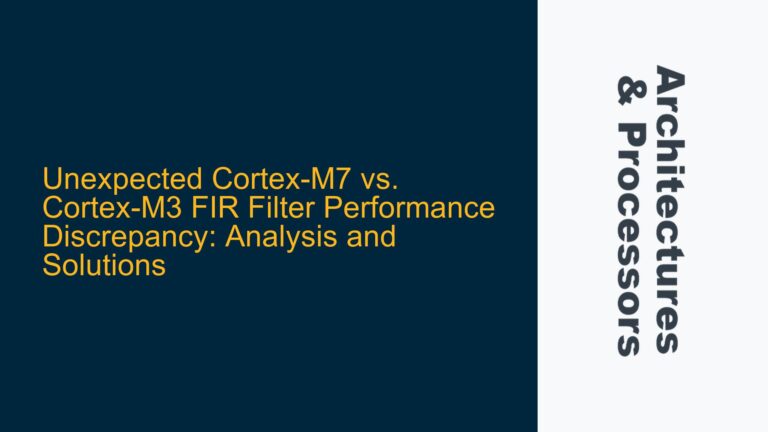ARM Cortex-R52 PMU Register Ambiguities and Missing Reset Values
The ARM Cortex-R52 processor, specifically revision r1p1, incorporates a Performance Monitoring Unit (PMU) that is critical for profiling and optimizing system performance. However, the documentation for the PMU registers, particularly in the context of PMU v3, is incomplete. Key issues include the use of "UNK" (unknown) for reset values and insufficient descriptions for many PMU registers. This lack of clarity poses significant challenges for developers, especially those working on functional validation and API development, as it hinders accurate implementation and debugging of performance monitoring features.
The PMU in the Cortex-R52 is designed to provide detailed insights into system performance by counting events such as cache misses, branch mispredictions, and instruction executions. These events are tracked through a set of configurable counters, each associated with specific PMU registers. The registers control aspects such as event selection, counter enable/disable states, and interrupt generation. Without precise documentation, developers cannot reliably configure these registers, leading to potential misconfigurations that could skew performance data or cause system instability.
The absence of reset values further complicates the initialization process. Reset values are crucial for ensuring that the PMU starts in a known state after power-up or a system reset. When these values are marked as "UNK," developers must resort to trial and error or make assumptions, both of which are error-prone and time-consuming. This issue is particularly problematic in safety-critical applications, where deterministic behavior is paramount.
Incomplete PMU v3 Documentation and UNK Reset Values
The core of the problem lies in the incomplete documentation of the PMU v3 registers in the ARM Cortex-R52 Technical Reference Manual (TRM). The TRM is the primary source of information for developers working with the Cortex-R52, and any gaps in its content directly impact the ability to implement and validate PMU functionality. The use of "UNK" for reset values suggests that these values were either not finalized at the time of documentation or were intentionally omitted due to proprietary concerns. However, this leaves developers without a reliable reference for initializing the PMU.
Another contributing factor is the complexity of the PMU v3 architecture itself. PMU v3 introduces several new features and enhancements over previous versions, including additional event types, more flexible counter configurations, and improved interrupt handling. These advancements, while beneficial, also increase the complexity of the register set. Without detailed descriptions, developers may struggle to understand the purpose and usage of each register, leading to suboptimal configurations or even incorrect implementations.
The lack of clarity is particularly evident in registers related to event selection and counter control. For example, the PMXEVTYPER register, which selects the event type to be counted by a specific counter, is described in the TRM but lacks detailed information about the encoding of certain event types. Similarly, the PMCNTENSET and PMCNTENCLR registers, which control the enabling and disabling of counters, do not provide sufficient detail on their behavior under specific conditions, such as when multiple counters are enabled simultaneously.
Resolving PMU Register Ambiguities and Establishing Reset Values
To address the issues with the PMU register documentation and reset values, developers can take several steps. First, they should consult the ARM Architecture Reference Manual (ARM ARM) for additional information on PMU v3. While the Cortex-R52 TRM is the primary reference, the ARM ARM provides a broader overview of the PMU architecture and may contain details not included in the TRM. This can help fill in some of the gaps in the register descriptions.
For registers with "UNK" reset values, developers can perform empirical testing to determine the actual reset values. This involves writing known values to the registers, performing a reset, and then reading the registers to observe their post-reset states. While this approach is time-consuming, it can provide valuable insights into the behavior of the PMU and help establish a reliable baseline for initialization.
In cases where the TRM and ARM ARM do not provide sufficient detail, developers can reach out to ARM support for clarification. ARM maintains a support forum where developers can ask questions and receive guidance from ARM engineers. Additionally, ARM may provide updated documentation or errata that address specific issues with the PMU registers.
For registers related to event selection and counter control, developers should carefully review the available documentation and cross-reference it with the ARM ARM. They should also consider the implications of their configurations on system performance and stability. For example, enabling too many counters simultaneously may lead to resource contention or overflow conditions, which could skew performance data or cause interrupts to be missed.
To ensure reliable PMU operation, developers should implement robust initialization routines that account for potential ambiguities in the register descriptions. This includes setting all relevant registers to known values, even if their reset values are marked as "UNK." Additionally, developers should validate their PMU configurations through extensive testing, including stress tests and edge cases, to ensure that the PMU behaves as expected under all conditions.
In summary, while the incomplete documentation of the PMU registers in the ARM Cortex-R52 TRM poses significant challenges, developers can overcome these issues through a combination of empirical testing, consultation of additional resources, and careful validation of their configurations. By taking these steps, developers can ensure that their PMU implementations are accurate, reliable, and capable of providing meaningful performance insights.






